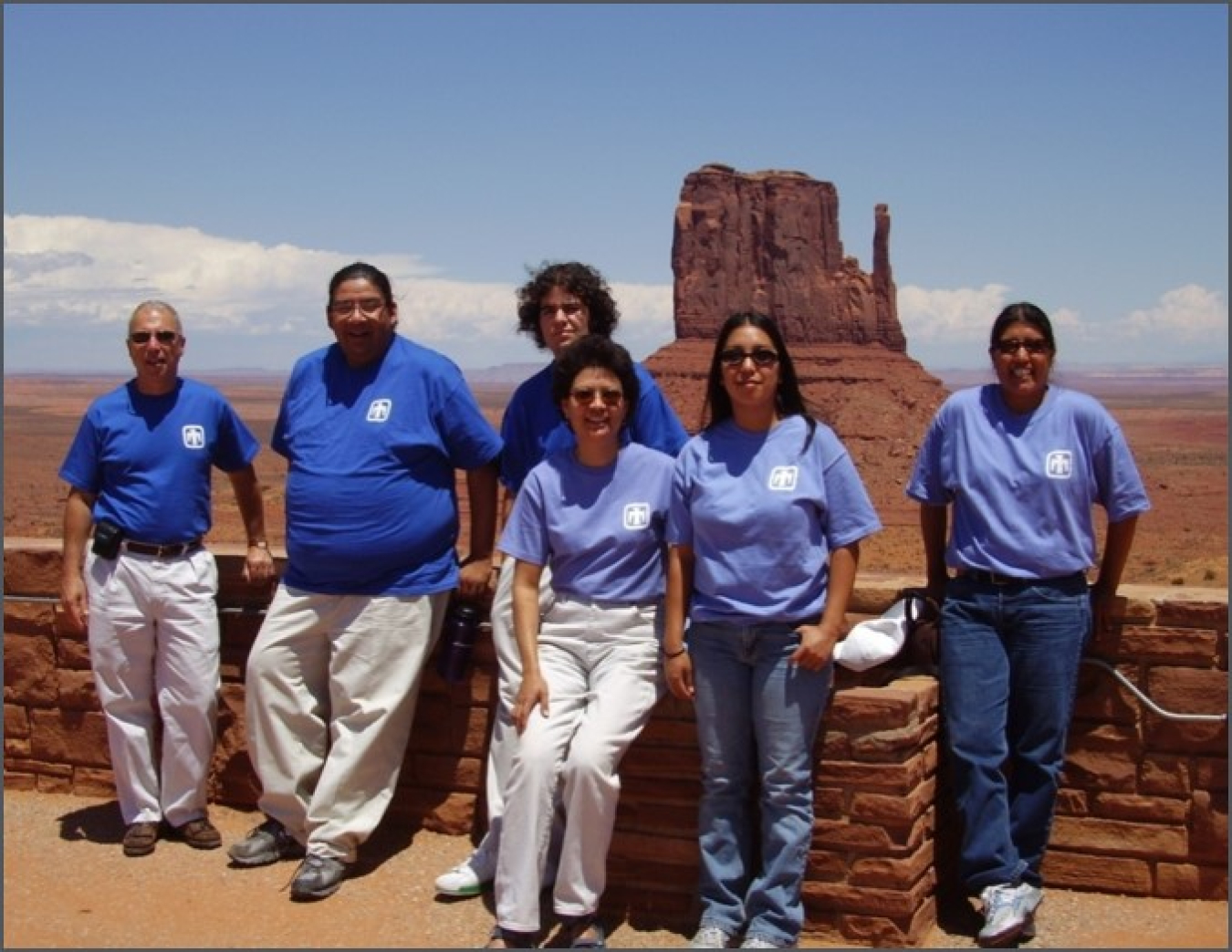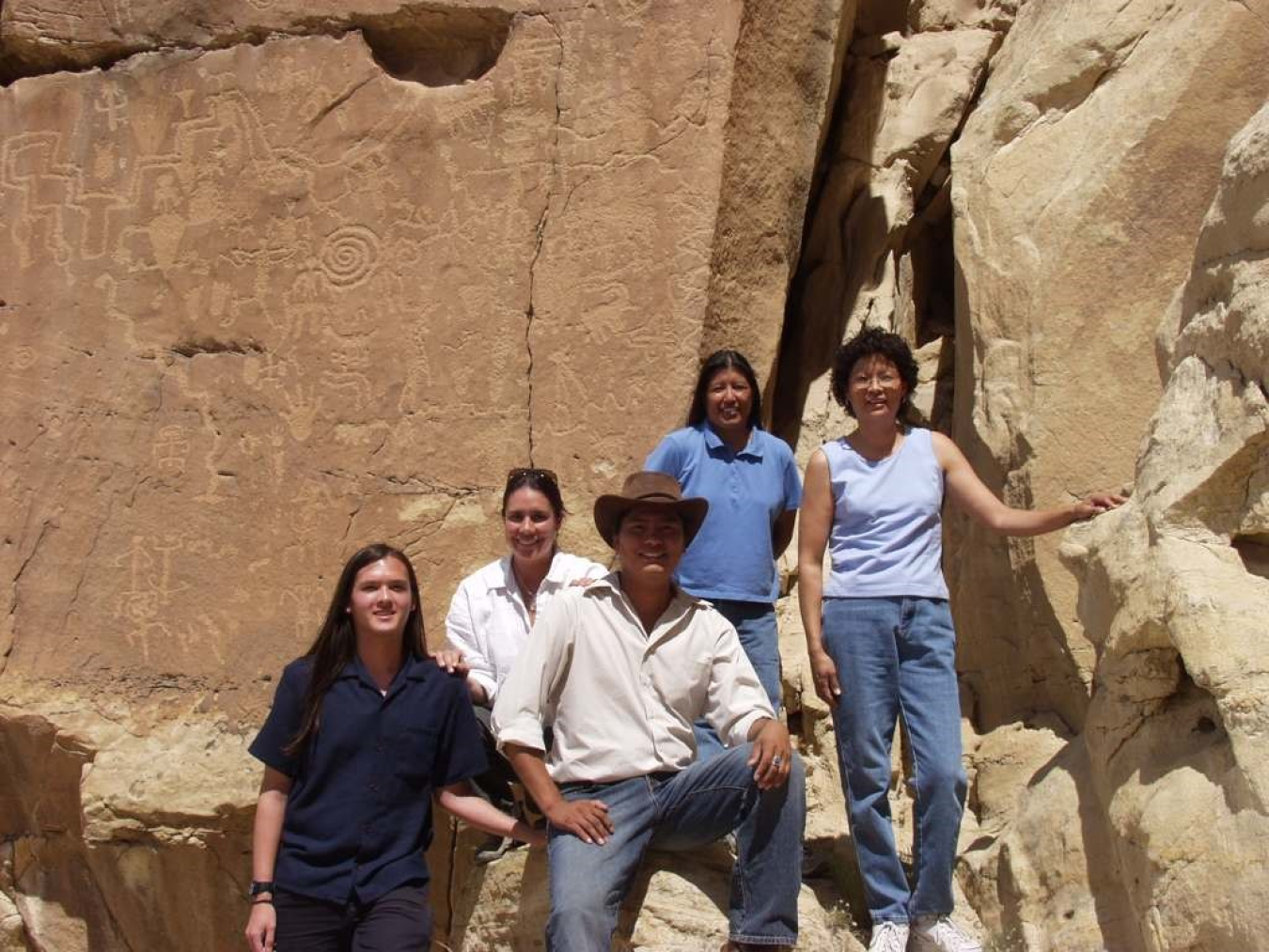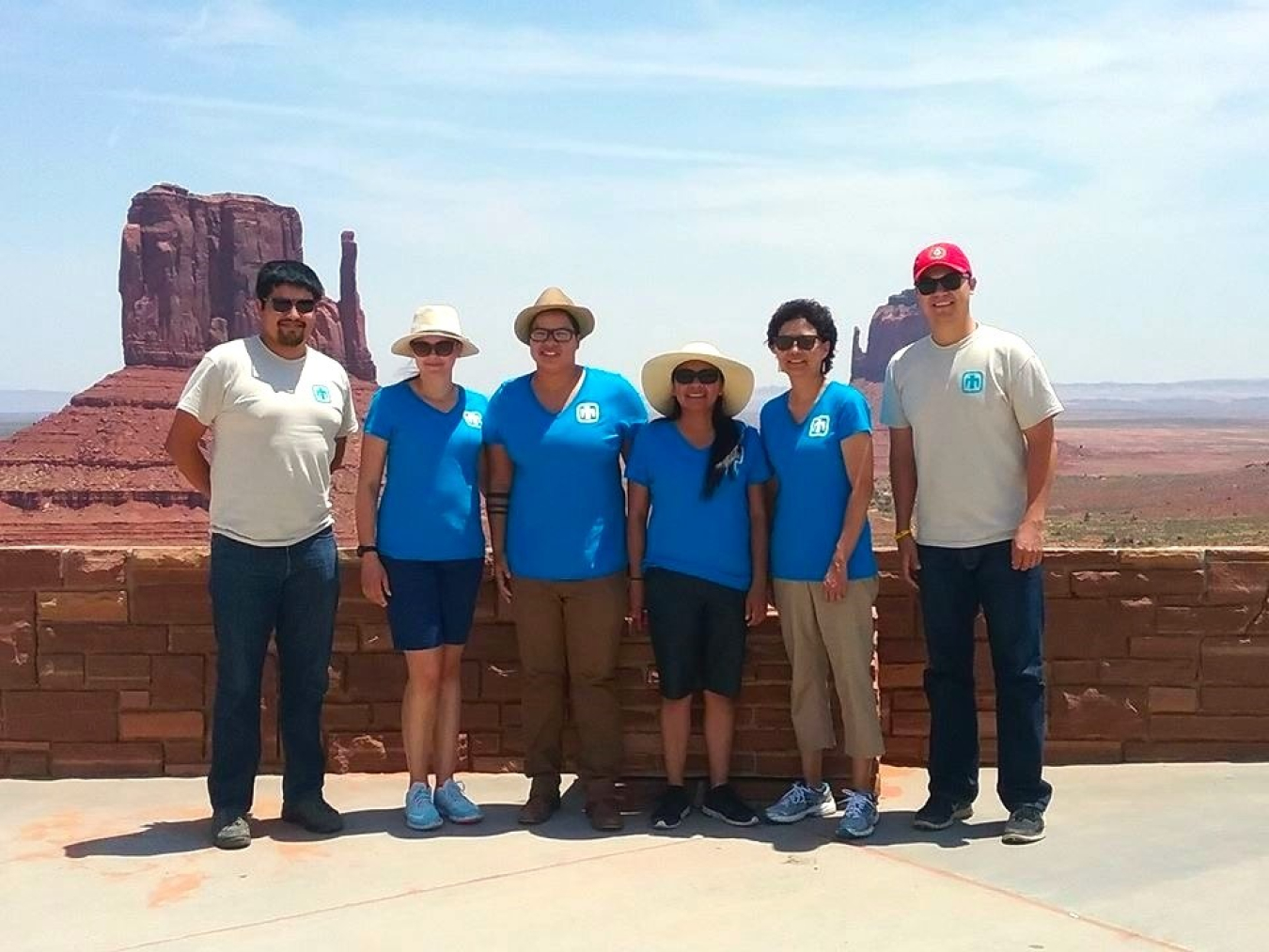
2006 interns with DOE and Sandia staff at Navajo Nation in Monument Valley, UT. From left: Thom Sacco, Terry Battiest, Jonathan Biron, Sandra Begay, Lani Tsinnajinnie, Debby Tewa
The U.S. Department of Energy (DOE) Office of Indian Energy is accepting applications until February 19 for our 2018 summer college student internship program, and we're featuring past Indian Energy interns in a series of blog posts. In this blog, we highlight the last 16 years of our internship program, including what former students have been doing since their internships.
In 2017, the Office of Indian Energy partnered with the American Indian Science and Engineering Society (AISES) in its #PledgeNativesInSTEM campaign to raise awareness and facilitate dialogue around the importance of science, technology, engineering, and mathematics (STEM) in Indian Country. The Office is proud to support Native participation in STEM studies and careers—specifically through our college student internship program.
Interested in Interning with Us Next Summer? Apply by February 19
College students interested in participating in the Office of Indian Energy’s 12-week summer internship at Sandia National Laboratories in Albuquerque, New Mexico, must apply by Feb. 19, 2018. Current full-time technical undergraduate and graduate students who have a minimum grade point average of 3.0/4.0 and are familiar with Native American culture and tribal issues are eligible to apply. Sandia uses Indian Preference for this internship.
For more information about this opportunity and how to apply, visit the Sandia National Laboratories Internship web page and look for job postings 659639 (graduate) and 659640 (undergraduate), or contact Sandra Begay with Sandia National Laboratories at skbegay@sandia.gov.
Why Support Native Participation in STEM Studies and Careers?
American Indian and Alaska Native students are among the most underrepresented groups in higher STEM education and occupations.
According to the National Science Foundation, American Indians or Alaska Natives hold a mere 0.2% of science and engineering (S&E) occupations, and represent only 0.3% of highest degree-holders in S&E fields. And between 2000 and 2015, the number of S&E bachelor’s degrees awarded to American Indians or Alaska Natives dropped from 0.7% to 0.5%.
About Our Internship Program
An educated and technically skilled workforce is paramount to the development of tribal energy resources and the protection of tribal lands. The Office of Indian Energy’s college student summer internship program provides an opportunity for current full-time undergraduates and graduate students—who are familiar with Native American culture and tribal issues—to support Office of Indian Energy funded projects in the field and at DOE’s Sandia National Laboratories.

2004 interns with Sandia staff at the Hopi Tribe petroglyphs. From left: Benjamin Mar, Jennifer Coots Valdez, Colin Ben, Deborah Tewa, Sandra Begay
This gave me the opportunity to learn first-hand from tribal members and become aware of the current challenges tribes are experiencing. It also allowed me to learn from the success of tribes and try to understand why projects work in some instances and fail in others.
From 2002 to 2017, 38 undergraduate and graduate interns participated in the Office of Indian Energy’s college student internship program, representing 21 different tribal affiliations and 19 different majors.
Most Former Interns Are Working in Tribal- or STEM-Related Jobs
Of the 30 former interns who have completed their degrees (eight additional interns are still students):
- 50% are in tribal-related work
- 33% are non-tribal STEM work
- 13% are in non-STEM work
- 4% are seeking employment.

2015 interns with Sandia staff at Navajo Nation in Monument Valley, UT. From left: Len Necefer, Brittany Anstead, Kimberlynn Cameron, JoDonna John, Sandra Begay, and Thomas (Tommy) Jones
The places I have seen, the people I have met, and the things I have learned are in no comparison to what I imagined this internship would entail. The opportunities I have had this summer to meet and learn from many different people have changed the way I see and think about tribal lands and green initiatives.
What Are Our Interns Doing Now?
Here's a look at how past interns have applied their Indian Energy internship experience in their careers:
- One is the Navajo Nation’s tribal utility renewable energy engineer.
- Two work as corporate planners for Sandia National Laboratories in New Mexico and California.
- One is a research and development engineer at Sandia.
- One works as private developer of energy efficiency technology for tribal casinos.
- One works as a private commercial-scale solar photovoltaics design engineer.
- One is a tribal solar and energy efficiency consultant.
- Two work for Taos Pueblo, one as an environmental staff member and one as a community planner.
- Two have worked for the DOE Office of Indian Energy as technical tribal energy contractors; read a recent blog from one of these past interns.
- One serves as the community energy coordinator for a nongovernmental organization.
- One served as a DOE Wind Project Officer and is now in private industry.
- One served as a Navajo Nation tribal utility renewable energy engineer, where they successfully implemented Navajo's Energy Efficiency and Conservation Block Grant program funds, as well as other DOE-funded projects.
- Two work for the Department of Interior Bureau of Indian Affairs: one as a civil engineer, and the other as a geospatial information systems specialist.
View the full list of former interns and links to their research papers on our past interns page.
Learn more about how the Office of Indian Energy’s college student internship program is sponsoring the next generation of Native leaders in STEM studies and careers.
